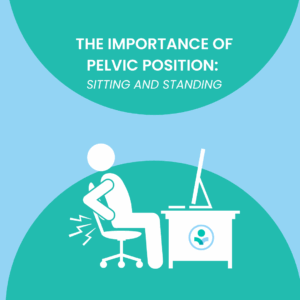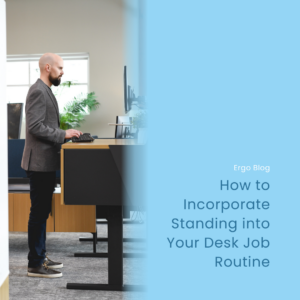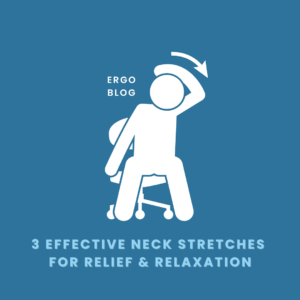Updated: Nov 3, 2022
What Office Chair Should I Buy?
Choosing an office chair is not a one-size-fits-all solution. A particular office chair may boast outstanding ergonomic benefits, but it is important to test it out for yourself to be sure it is the right fit for you. Your office chair should provide adequate back support, properly fit your height and build, and promote proper posture throughout your workday.
Just as you wouldn’t buy a one-size-fits-all shirt and expect it to fit like a glove, you can’t expect an office chair to be a perfect fit for all body types. Don’t be deceived by promising ads of cutting-edge ergonomic design. What works like a dream for one person may not for another.
If you’re in the market for a new office chair, approach your decision with patience. It will take some time to find the right office chair for you. However, you don’t have to go into your search blindly. There are a number of important factors to consider when choosing an office chair, but it doesn’t have to be an overwhelming process. If you know what to look out for, you will find a comfortable and ergonomically friendly chair that is just right for you. Let’s talk about what you need to know.
What kind of back support should an office chair provide?
An office chair should supply adequate back support throughout your workday. A key part of preventing a work-related injury is to reduce strain on your primary and secondary muscles. A proper office chair backrest allows you to sit upright without fatigue.
You might think that not relying on a backrest will help you tighten your core muscles and may even get you some amazing abs while working at your desk. While it is true that our muscles should remain engaged while we are seated, we don’t want them working harder than they need to. This will lead to injury over time.
A good backrest will support the primary muscles that are important for keeping your body in an upright position. Without proper support, primary muscles become fatigued and shift their workload to the secondary muscles, which are simply not up to the task. When secondary muscles become fatigued, they shift the burden to the skeletal system to help keep us upright. This leads to poor posture.
That is why a supportive backrest should be the number one deciding factor in buying a new office chair. Inadequate back support leads to poor posture, which brings along with it a whole host of issues and potential injuries.
If you have a habit of sitting perched on the edge of your chair, your abdominal and back muscles are working too hard to keep your body upright all day long. Do you feel tired by mid-afternoon and at the end of your workday? This could be the culprit. By using a proper backrest, your muscles do not get overworked, which ultimately prevents injury.
If you want a chair that promotes good posture and allows you to feel great when you go home at the end of the day, you must look first and foremost for an office chair with a supportive backrest.
What is the best backrest for an office chair?
An office chair should have a backrest that supports all the way from your low back up to the middle of your shoulder blade area to reduce muscle fatigue throughout the day. Also, consider the recline position of an office chair before buying. Most office chair backrests are in a slightly reclined position, which is often around 100 to 110 degrees. Based on your anatomy, you might be more comfortable in an office chair with an option to sit more upright at 90 degrees.
I recommend using a backrest that can change angles and is not stuck in one position. It is best to slightly change the angle of your backrest throughout your workday in order to engage different muscles. This reduces muscle strain and fatigue and will help you feel more energized at the end of your workday.
What is the best seat for an office chair?
The seat pan of an office chair is another important factor to consider when buying a new office chair. A properly fitting office chair seat allows a one to two-inch space between the back of your leg and the front of the seat. The seat should also adjust to a height where your hips and knees sit at 90 to 100 degrees.
You do not want the back of your leg touching the front of the seat. This limits back support and can also irritate the soft tissue of your calf. Having more than a one to two-inch space is not favorable either. When this happens, you lose the amount of surface area supporting your legs, which distributes too much force to your hips and low back, causing discomfort.
If you wear a tool belt, a holster, or just simply need a little more room for your booty on your chair, choose an office chair with space between the backrest and seat pan. Some chairs even allow backward and forward adjustment of the seat pan. To ensure proper seat size, test the office chair out for yourself.
Should an office chair have armrests?
Office chair armrests offer important upper body support while reducing the amount of force on your low back and hips. Slouching is a common culprit in work-related injuries, but office chair armrests can help prevent bad posture habits by properly supporting upper body weight. By distributing more upper body weight through the arms, armrests can also reduce low back and hip discomfort.
It is best if your office chair has adjustable armrests. Slightly changing your armrest position throughout the workday can give your muscles a break, reducing fatigue and preventing injury. Look for an office chair with armrests that adjust in height. This way you can ensure your elbows sit at 90 to 100 degrees.
It is also beneficial if the position of your office chair armrests can be adjusted. Your arms should sit comfortably by your sides, so it is important to be able to adjust your armrests accordingly. Be sure that your elbows are not sitting directly under your shoulders, but rather slightly away from your sides. However, if your elbows sit out too far, your muscles are forced to work harder to maintain good posture.
What is the best fabric for an office chair?
The best fabric for an office chair is something that is breathable, such as a mesh or a woven fabric. If your office chair fabric is not breathable, your body will work overtime trying to keep you cool. This can lead to fatigue by the end of your workday.
Not all jobs allow for a fabric option. Some places of work require a material able to sustain dirt, oil, and debris. On the plus side, however, in these environments, the majority of your workday is not usually spent seated in an office chair anyway.
Key Factors to Consider When Buying an Office Chair
These are the key factors to keep in mind when buying an office chair.
- The backrest should adequately support the low back and be high enough to offer support up into the middle of your shoulder blade area.
- An adjustable backrest is best. Most office chairs sit in a reclined position between 100 and 110 degrees, but you may feel more comfortable sitting at a 90-degree angle at times.
- Office chairs with armrests are best for promoting proper posture. Look for an office chair with the capability to adjust the height and position of the armrests to get the perfect fit.
- Choose a seat pan that fits your bottom properly. The edge of the seat should not hit the back of your knees. Be sure there is a one to two-inch gap between the back of your knees and the seat edge.
- If you need a roomier seat, look for an office chair with a space between the bottom of the backrest and the seat pan. Some office chairs also come with the option to move the seat pan forward and backward.
- Be sure the office chair adjusts to your height. Your knees should be at a 90 to 100-degree angle when seated, so confirm that you can achieve that result before purchasing a new office chair.
- Choose an office chair made of breathable material, such as mesh or woven fabric. This keeps your body temperature regulated throughout the day and helps reduce fatigue.
Before purchasing an office chair, I recommend sitting in a few chairs first. Just because an office chair boasts an ergonomic design doesn’t mean it will be the right fit for you. Have patience in your search, and use the guidelines in this blog post to make an educated decision. Your body will thank you.
Also, check out our YouTube video below for a visual representation of the blog!



